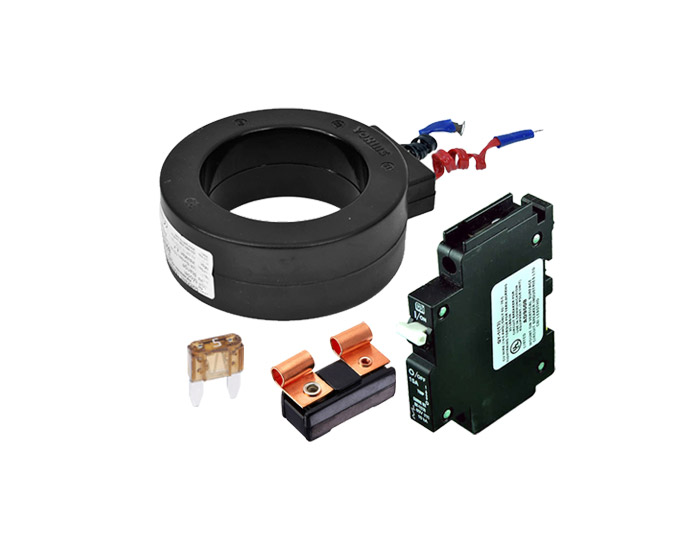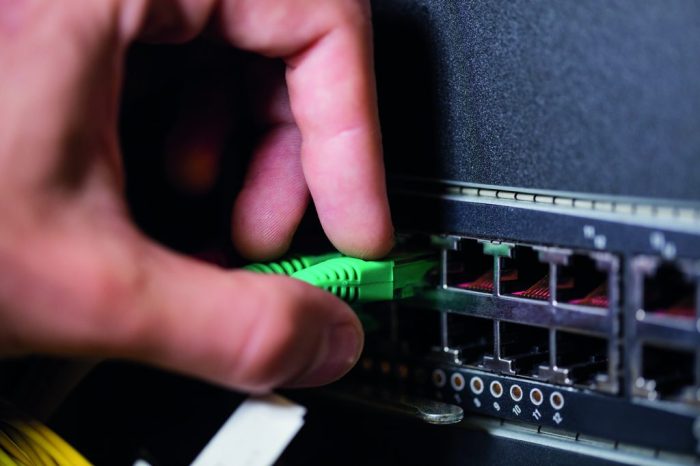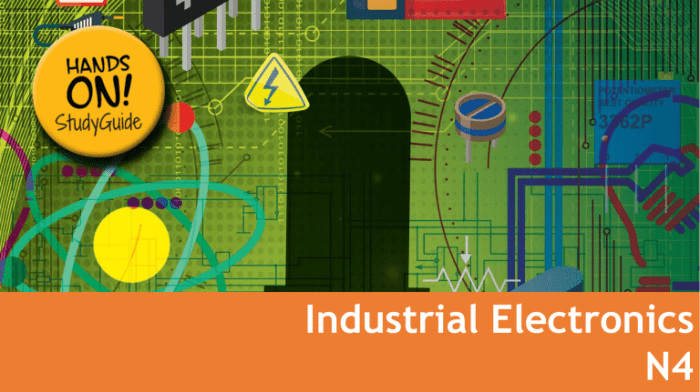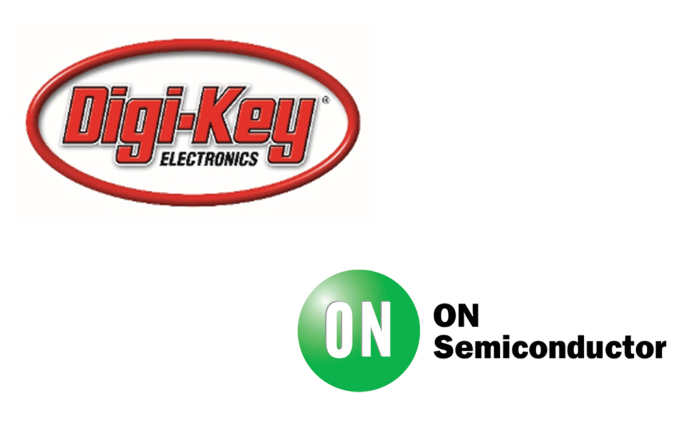Industrial Electronics A Comprehensive Guide
Industrial electronics form the backbone of modern manufacturing and automation. From intricate control systems to sophisticated robotics, these systems are essential for efficiency and productivity. This guide delves into the core principles, components, and applications of industrial electronics, exploring its historical evolution and future trends. We’ll examine everything from basic components to complex control strategies, highlighting the crucial role of safety and regulations in ensuring reliable operation.
The field encompasses a vast array of technologies, including programmable logic controllers (PLCs), Supervisory Control and Data Acquisition (SCADA) systems, sensors, actuators, and power electronics. Understanding these components and their interactions is key to grasping the overall functionality of industrial electronic systems. Furthermore, the guide explores the significance of safety considerations and regulatory compliance in the design and implementation of these systems.
Introduction to Industrial Electronics
Industrial electronics encompasses the application of electronic principles and components within industrial settings. It focuses on the design, development, and implementation of systems for controlling, monitoring, and automating processes in factories, power plants, and other industrial environments. This field relies heavily on sophisticated electronic circuits and sensors to optimize efficiency, safety, and productivity.
Core Principles of Industrial Electronic Systems
Industrial electronic systems are built upon fundamental principles, including control theory, signal processing, and power electronics. Control theory dictates how feedback loops maintain desired system states. Signal processing allows for the accurate interpretation of sensor data, enabling real-time responses to process changes. Power electronics handle the conversion and regulation of electrical power, ensuring the efficient operation of various industrial equipment.
Examples of Industrial Electronic Applications
Industrial electronics has a wide range of applications across diverse industries. Examples include automated manufacturing lines, robotics, process control in chemical plants, and energy management systems. These systems utilize programmable logic controllers (PLCs) and supervisory control and data acquisition (SCADA) systems to monitor and regulate complex processes. Precision in automated assembly lines, driven by industrial electronics, drastically improves manufacturing speed and quality. Smart grids utilize industrial electronic systems to manage and distribute electricity more effectively.
Historical Evolution of Industrial Electronics
The field of industrial electronics has evolved significantly over time from early electromechanical systems to sophisticated microprocessor-based control systems. Early automation relied on relay-based systems, which were gradually replaced by the introduction of transistors and integrated circuits. The advent of microprocessors revolutionized the industry, leading to the development of more complex and efficient control systems. The evolution continues with the integration of digital technologies and the rise of the Internet of Things (IoT) in industrial settings.
Comparison of Industrial Control Systems
Different industrial control systems cater to various needs and complexities. The table below compares Programmable Logic Controllers (PLCs) and Supervisory Control and Data Acquisition (SCADA) systems.
| Feature | PLC | SCADA |
|---|---|---|
| Control Scope | Limited, focused on specific machines or processes. | Broad, monitoring and controlling an entire facility or network. |
| Data Handling | Handles discrete data from sensors and actuators. | Handles large volumes of continuous and discrete data from various sources. |
| Communication | Typically local communication with field devices. | Extensive communication network for distributed control and monitoring. |
| Complexity | Relatively simpler to program and implement. | More complex, requiring advanced programming and expertise. |
| Typical Applications | Automated assembly lines, robotic arms, and conveyor systems. | Power plants, water treatment facilities, oil pipelines. |
Components and Technologies: Industrial Electronics

Source: southernindustrial. store
Industrial electronic circuits rely heavily on a diverse array of components and technologies to achieve their functionalities. These components work together, often in intricate systems, to automate processes, monitor conditions, and control machinery within industrial settings. Understanding these components is crucial for effective design, maintenance, and troubleshooting.
Key Components in Industrial Electronic Circuits
Various components are integral to industrial electronic circuits. These components, ranging from simple resistors to complex programmable logic controllers (PLCs), are essential for the functionality of any industrial system. Common components include resistors, capacitors, inductors, diodes, transistors, integrated circuits (ICs), and optocouplers. Each plays a specific role in shaping the circuit’s behavior. For instance, resistors control current flow, capacitors store energy, and transistors act as switches. Understanding the properties and characteristics of each component is fundamental to circuit design.
Sensors and Actuators
Sensors are crucial for detecting physical phenomena and converting them into electrical signals. Actuators, on the other hand, use these electrical signals to perform mechanical actions. A wide variety of sensors are used in industrial settings, including temperature sensors, pressure sensors, proximity sensors, and level sensors. These sensors detect changes in temperature, pressure, proximity, or liquid levels, transforming them into signals that can be processed by the electronic system. Actuators, such as motors, solenoids, and valves, are the “output” side, responding to the electrical signals by performing mechanical actions, like opening a valve or controlling motor speed.
Power Electronics Components
Power electronics components are critical for controlling and converting electrical power in industrial applications. These components handle the high currents and voltages frequently encountered in industrial settings. Converters, inverters, rectifiers, and choppers are common examples. Converters change the form of AC to DC power, inverters change DC to AC power, rectifiers convert AC to DC, and choppers control the DC voltage level. Understanding the functionality of these components is vital for designing efficient and reliable power systems in industrial environments.
Communication Protocols
Industrial communication protocols facilitate the exchange of data between different components and systems. Modbus, Profibus, and Ethernet/IP are prevalent protocols used in industrial automation. Modbus is a simple, widely used protocol, often used for basic communication tasks. Profibus is a more sophisticated protocol, providing advanced features for complex industrial networks. Ethernet/IP leverages the existing Ethernet infrastructure for high-speed communication, offering increased bandwidth and flexibility. The choice of protocol depends on factors such as the required data rate, distance, and the complexity of the communication task.
Power Supply Types
| Power Supply Type | Advantages | Disadvantages |
|---|---|---|
| AC Power Supply | Readily available, cost-effective, and well-established infrastructure | Requires transformers and rectifiers for DC applications, potential for voltage fluctuations |
| DC Power Supply | Stable voltage output, suitable for direct operation of DC devices, less susceptible to voltage fluctuations | Higher cost, less readily available than AC power, potentially more complex wiring for industrial applications |
| Uninterruptible Power Supply (UPS) | Provides backup power during outages, protecting sensitive equipment | Higher cost, limited backup time |
Different power supply types offer various advantages and disadvantages in industrial settings. Choosing the appropriate type depends on the specific needs of the application, including the equipment’s power requirements, reliability needs, and budget considerations.
Component Selection
Selecting the appropriate components for an industrial application involves considering several factors. These factors include the specific requirements of the task, such as the voltage, current, and power ratings, the operating environment, and the cost constraints. For example, choosing a motor for a conveyor belt requires considering the load capacity, speed requirements, and environmental conditions. A thorough understanding of the application’s needs is essential for selecting the right components and ensuring the system’s reliability and efficiency.
Design and Implementation
Designing and implementing industrial electronic systems involves a meticulous process, from initial conceptualization to final testing and deployment. This stage encompasses the practical application of theoretical knowledge and the selection of appropriate components to achieve the desired functionality. Critical considerations include safety, reliability, and cost-effectiveness, which are intertwined with the system’s design and implementation.
Effective design necessitates a clear understanding of the specific application requirements. Factors such as environmental conditions, power limitations, and communication protocols must be carefully evaluated to ensure the system’s robustness and performance.
Common Industrial Electronic Control Systems
Various control systems are employed in industrial settings, each tailored to specific tasks. Examples include programmable logic controllers (PLCs), distributed control systems (DCSs), and supervisory control and data acquisition (SCADA) systems. PLCs are widely used for automating discrete processes, DCSs manage continuous processes, and SCADA systems monitor and control large-scale facilities.
Procedure for Designing a Simple Industrial Control System
A well-structured approach to designing a simple industrial control system involves several key steps. First, a detailed understanding of the system’s function and objectives is essential. This involves defining inputs, outputs, and desired control actions. Second, component selection and interconnection are crucial for establishing the system’s architecture. This stage involves choosing suitable sensors, actuators, and controllers based on the specific application. Third, the system’s functionality must be rigorously tested and validated to ensure proper operation.
Safety Considerations in Industrial Electronic Systems
Safety is paramount in industrial electronic systems. Potential hazards include electrical shocks, equipment malfunctions, and process failures. Safety measures should incorporate redundant systems, safety interlocks, and emergency shut-off mechanisms to mitigate risks. Compliance with relevant safety standards and regulations is critical for preventing accidents and ensuring worker safety. Implementing robust safety procedures and protocols is crucial to avoid accidents and injuries in the workplace.
Troubleshooting Industrial Electronic Systems
Troubleshooting industrial electronic systems requires a systematic approach. First, identify the problem by carefully observing the system’s behavior and analyzing error messages. Next, isolate the faulty component or circuit. Third, perform diagnostic tests to confirm the fault. Finally, replace or repair the defective component and verify the system’s operation.
Control Strategies
Implementing control strategies in industrial systems allows for precise and automated control of processes. Examples include proportional-integral-derivative (PID) control, which adjusts the system’s output based on the error between the desired and actual values. This method is widely used for maintaining stable conditions in various industrial processes. Other strategies include fuzzy logic control, which handles imprecise or ambiguous data, and adaptive control, which adjusts its parameters based on changing conditions.
Steps in a Typical Industrial Electronic System Design Process
| Step | Description |
|---|---|
| 1. Requirements Gathering | Define the system’s objectives, inputs, outputs, and constraints. |
| 2. System Design | Develop the system architecture, select components, and determine interconnections. |
| 3. Component Selection | Choose appropriate sensors, actuators, controllers, and other necessary components based on specifications and budget. |
| 4. System Implementation | Construct the system according to the design, ensuring proper wiring and connections. |
| 5. Testing and Validation | Thoroughly test the system’s functionality, performance, and safety features. |
| 6. Commissioning and Deployment | Prepare the system for operation, including documentation and training. |
Applications and Case Studies
Industrial electronics are ubiquitous in modern manufacturing, driving automation, efficiency, and precision. Their applications extend far beyond the factory floor, impacting energy management, transportation, and building automation. This section explores diverse industrial electronics applications and case studies across various sectors.
Manufacturing Applications
Industrial electronics are integral to the manufacturing process, enhancing efficiency and productivity. Automated systems, including robots and programmable logic controllers (PLCs), automate repetitive tasks, leading to increased output and reduced human error. Real-time monitoring and control systems allow for adjustments to processes based on changing conditions, enabling manufacturers to respond quickly to fluctuations in demand.
Robotics and Automation
Industrial robots, controlled by sophisticated electronic systems, perform a wide range of tasks, from welding and painting to material handling and assembly. These systems enhance accuracy, speed, and safety in manufacturing. Collaborative robots (cobots), designed to work alongside human operators, are increasingly prevalent in various industries, allowing for more flexible and adaptable production lines. The integration of sensors and actuators within these systems enables robots to react to their environment in real time, increasing operational efficiency.
Case Studies, Industrial Electronics
Several industries have successfully implemented industrial electronics solutions. For example, in the automotive sector, automated assembly lines using robots and sophisticated control systems have dramatically increased production rates and quality. In the food processing industry, automated systems for packaging and sorting have improved efficiency and reduced waste. These are just a few examples of how industrial electronics can streamline processes and enhance productivity in various sectors.
Energy Management
Industrial electronics play a crucial role in energy management. Smart grids and power distribution systems leverage electronic components for monitoring and controlling energy flow, optimizing consumption, and reducing waste. This includes energy-efficient motors, variable frequency drives, and advanced control systems that adjust energy use based on real-time demand.
Transportation
Industrial electronics are transforming transportation. Electronic control units (ECUs) in vehicles manage engine performance, safety systems, and other functions. Autonomous vehicles rely heavily on advanced sensors, communication systems, and control algorithms to navigate and operate safely. Electric vehicles (EVs) use advanced power electronics for efficient charging and battery management.
Building Automation
Industrial electronics are used in building automation systems (BAS) to optimize energy use, maintain comfort, and enhance security. Sensors and actuators monitor and control lighting, heating, ventilation, and air conditioning (HVAC), ensuring optimal energy efficiency and occupant comfort. These systems integrate various technologies, including PLCs and SCADA (Supervisory Control and Data Acquisition) systems, to provide comprehensive control over building functions.
Summary Table
| Sector | Common Applications |
|---|---|
| Manufacturing | Automated assembly lines, robotic systems, PLC-based control systems, process monitoring |
| Energy | Smart grids, energy-efficient motors, variable frequency drives, energy monitoring systems |
| Transportation | Vehicle control units, autonomous vehicle systems, electric vehicle charging, and battery management |
| Building Automation | HVAC control, lighting control, security systems, energy management |
Emerging Trends and Future Prospects

Source: electronicsweekly.com
The field of industrial electronics is undergoing rapid transformation, driven by advancements in digitalization, automation, and artificial intelligence. These technologies are reshaping manufacturing processes, enhancing efficiency, and creating new possibilities for innovation. This section explores these emerging trends and their potential impact on the future of industrial electronics.
Emerging Technologies in Industrial Electronics
The landscape of industrial electronics is constantly evolving, with new technologies emerging at a rapid pace. Key advancements include the integration of advanced sensors, enabling real-time data acquisition and analysis; the use of sophisticated control systems, facilitating precise and automated processes; and the development of more powerful and energy-efficient microcontrollers, enhancing system performance and reliability. These technologies, combined with the growing availability of affordable and readily accessible computing power, contribute to the burgeoning field of Industry 4.0.
Impact of Digitalization and Automation
Digitalization and automation are profoundly impacting industrial electronics. Real-time data analysis from connected machines enables proactive maintenance, reducing downtime and increasing overall operational efficiency. Automated systems are optimizing processes, improving quality control, and reducing human error. This integration of digital technologies into industrial processes is creating more flexible and responsive production lines, capable of adapting to changing demands and customized products.
Role of Artificial Intelligence in Industrial Electronics
Artificial intelligence (AI) is becoming increasingly important in industrial electronics. AI algorithms can analyze vast amounts of data collected from sensors and machines, enabling predictive maintenance, optimizing energy consumption, and automating complex decision-making processes. AI-powered systems can learn from historical data to anticipate potential issues, enabling proactive solutions and minimizing downtime. For example, AI-driven systems are being used to detect anomalies in equipment operation, predicting potential failures before they occur.
Implications of the Internet of Things (IoT)
The Internet of Things (IoT) is fundamentally changing how industrial systems are designed and operated. The connectivity of machines and devices allows for seamless data exchange, enabling real-time monitoring and control of industrial processes. This connectivity fosters greater transparency and efficiency, enabling businesses to make informed decisions based on comprehensive data insights. IoT systems are essential for remote monitoring, predictive maintenance, and automated responses to various events.
Potential Future Applications of Industrial Electronics
Industrial electronics has the potential to revolutionize numerous industries. Future applications could include:
- Smart Manufacturing: Integrated systems that optimize production lines, predict maintenance needs, and enhance overall efficiency.
- Advanced Robotics: Sophisticated robots capable of performing complex tasks, adapting to changing environments, and interacting with human workers.
- Renewable Energy Systems: Intelligent control systems that optimize the generation and distribution of renewable energy, improving efficiency and reliability.
- Sustainable Manufacturing: Eco-friendly manufacturing processes that minimize waste and environmental impact, integrating sustainable practices throughout the production cycle.
- Precision Agriculture: Advanced sensors and control systems that optimize resource utilization and enhance crop yields.
Examples of Innovative Solutions in Industrial Electronics
Numerous innovative solutions are emerging in industrial electronics. One example is the development of intelligent sensors that can detect subtle changes in machine behavior, allowing for early detection of potential failures. Another example is the use of AI-powered predictive maintenance systems that analyze data from machines to predict potential failures, enabling proactive maintenance and minimizing downtime. These and other innovations are transforming industrial processes, increasing efficiency, and driving economic growth.
Safety and Regulations
Industrial electronic systems are increasingly complex and integrated into critical infrastructure. Ensuring safety in these systems is paramount to prevent accidents, damage, and downtime. Appropriate safety measures, standards, and regulations are crucial to mitigate potential hazards and maintain a safe working environment.
Safety in industrial electronic systems is not just about avoiding immediate harm, but also about preventing long-term damage to equipment, the environment, and human health. Proactive safety measures, often implemented through rigorous standards and regulations, help reduce the risk of catastrophic failures and improve overall system reliability.
Importance of Safety Measures
Robust safety measures are essential in industrial electronic systems for a multitude of reasons. They protect personnel from electrical shocks, equipment damage from short circuits and prevent environmental contamination from hazardous materials. Furthermore, compliance with safety regulations is critical for maintaining system reliability and avoiding legal repercussions.
Safety Standards and Regulations
Numerous international standards, such as IEC 61508, provide guidelines for the development of safety-instrumented systems (SIS). These standards define specific requirements for the design, implementation, and maintenance of safety-critical systems, emphasizing risk assessment and safety integrity levels. IEC 61508 is a widely recognized standard that dictates the required safety levels for various industrial control systems, setting a baseline for manufacturers and operators.
Risk Assessments in Industrial Electronic Projects
Thorough risk assessments are crucial in industrial electronic projects to identify potential hazards and develop mitigation strategies. A comprehensive risk assessment process involves analyzing potential risks, evaluating their likelihood and severity, and implementing control measures to reduce or eliminate these risks. This process ensures that safety is built into the system design from the outset.
Safety-Related Components and Technologies
Various components and technologies are designed to enhance safety in industrial electronic systems. These include safety relays, safety circuits, and safety sensors. Safety-related electronic components are often engineered with fail-safe mechanisms, ensuring that the system continues to function safely even in case of component failure.
Key Safety Regulations and Standards
| Regulation/Standard | Description |
|---|---|
| IEC 61508 | International standard for functional safety of electrical/electronic/programmable electronic safety-related systems. |
| IEC 61511 | International standard for safety-related programmable electronic systems. |
| OSHA (Occupational Safety and Health Administration) Standards | Regulations focused on workplace safety, including electrical safety standards relevant to the USA. |
| UL Standards (Underwriters Laboratories) | Standards for safety of electrical equipment, used in many regions. |
Electrical Grounding and Bonding
Proper electrical grounding and bonding are critical for preventing electrical hazards in industrial settings. Grounding systems ensure that electrical equipment is properly connected to the earth, providing a safe path for fault currents. Bonding connects metallic parts of equipment to ensure that they are at the same potential, reducing the risk of electrical shocks. Improper grounding can lead to dangerous voltage differences and increase the risk of electric shock. Effective grounding is essential to protect personnel and equipment from electrical hazards.
Summary

Source: studylib.net
In conclusion, industrial electronics is a dynamic and evolving field, driven by constant innovation and technological advancements. This guide provides a comprehensive overview of the key concepts, components, and applications, highlighting the importance of safety and regulations. From basic principles to emerging trends, the field continues to shape the future of manufacturing and automation. The intricate interplay of hardware, software, and control strategies creates powerful systems that optimize processes and drive productivity in various industries. A clear understanding of this multifaceted field is crucial for anyone involved in the design, implementation, or maintenance of industrial electronic systems.





